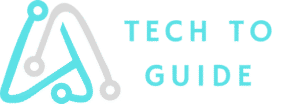Introduction
Explain what object detection is, why it’s key in computer vision, and how OpenCV provides the ideal toolkit for both traditional and AI-powered methods. Emphasize real-time processing, broad platform support, and the ease of experimenting with cutting-edge models. OpenCV supports Python, C++, Java, and more, and is optimized for real-time applications across platforms Roboflow BlogWikipedia.
1. What Is Object Detection & Why OpenCV?
- Define object detection: Unlike classification, it locates objects with bounding boxes—key for applications like surveillance, self-driving cars, and AR Label Your Data.
- Why OpenCV:
- Speed–efficient real-time processing on CPU/GPU Roboflow Blog.
- Supports both classical and deep learning methods Label Your DataRoboflow Blog.
- Rich ecosystem: image processing, DNN support, GPU modules OpenCV DocumentationRoboflow Blog.
2. Setting Up Your OpenCV Environment
- Required tools:
- Python 3.x, OpenCV (
opencv-python,opencv-contrib-python), NumPy, Matplotlib. - For deep learning: TensorFlow, PyTorch, and DNN models like YOLO, SSD.
- Install commands:
pip install opencv-python numpy matplotlib pip install tensorflow keras # optional for deep learning pip install torch torchvision # optional
- Python 3.x, OpenCV (
- Installation tips:
- Use
opencv-contrib-pythonfor advanced modules like tracking BroutonLab. - Ensure versions align with your hardware (CUDA-enabled GPUs, etc.).
- Use
3. Classical Methods: Haar Cascades & Viola–Jones
- Overview: Haar Cascades use trained classifiers on positive/negative images for fast detection—used for faces, stop signs, etc. GeeksforGeeksWikipedia.
- How it works:
- Positive/negative image training
- Cascade of classifiers for multi-scale detection GeeksforGeeks.
- Implementing in Python:
import cv2 cascade = cv2.CascadeClassifier('haarcascade_frontalface_default.xml') img = cv2.imread('image.jpg') gray = cv2.cvtColor(img, cv2.COLOR_BGR2GRAY) detections = cascade.detectMultiScale(gray, 1.1, 4) for x,y,w,h in detections: cv2.rectangle(img, (x,y), (x+w, y+h), (255,0,0), 2) cv2.imshow('Detected', img) cv2.waitKey(0) cv2.destroyAllWindows() - Pros & cons:
- Fast and straightforward.
- Less accurate for complex scenes or occlusions.
4. Detecting Moving Objects: Background Subtraction & Contours
- Use case: Ideal for security, traffic monitoring where detecting motion is priority LearnOpenCV.
- Techniques:
- Background subtraction isolates movement.
- Contours identify object outlines.
- Code snippet:
fgbg = cv2.createBackgroundSubtractorMOG2() while cap.isOpened(): ret, frame = cap.read() fgmask = fgbg.apply(frame) _, thresh = cv2.threshold(fgmask, 244, 255, cv2.THRESH_BINARY) contours, _ = cv2.findContours(thresh, cv2.RETR_EXTERNAL, cv2.CHAIN_APPROX_SIMPLE) for cnt in contours: if cv2.contourArea(cnt) > 500: x,y,w,h = cv2.boundingRect(cnt) cv2.rectangle(frame, (x,y), (x+w, y+h), (0,255,0), 2) - Strengths: Lightweight, real-time.
- Limits: Less effective with camera motion or lighting changes.
5. Feature-Based Detection & Recognition
- Technique: Use algorithms like ORB, SIFT, SURF to detect keypoints and match to known objects Medium.
- Implementation example (ORB):
orb = cv2.ORB_create() kp1, des1 = orb.detectAndCompute(img1, None) kp2, des2 = orb.detectAndCompute(img2, None) bf = cv2.BFMatcher(cv2.NORM_HAMMING, crossCheck=True) matches = bf.match(des1, des2) matches = sorted(matches, key=lambda x: x.distance) matched_img = cv2.drawMatches(img1, kp1, img2, kp2, matches[:10], None, flags=2) - Walkthrough: Preprocessing → keypoint detection → matching → visualization.
- Upsides: Works on unique textured objects.
- Downsides: Sensitive to scaling, occlusion, and lighting.
6. Tracking vs Detection
- Difference:
- Detection: Every frame is independently analyzed.
- Tracking: After detection, a bounding box is tracked across frames.
- OpenCV trackers include: BOOSTING, MIL, KCF, TLD, MedianFlow, GOTURN, MOSSE, CSRT BroutonLab.
- Best picks:
- MOSSE – extremely fast.
- KCF – balanced accuracy & speed.
- CSRT – best accuracy for complex scenarios.
7. Deep Learning with YOLO and DNN Module
- Why YOLO: Single-pass detection, real-time performance, excellent accuracy Label Your DataMediumarXiv.
- YOLO + OpenCV:
- Load
.cfgand weights. - Preprocess images with
blobFromImage. - Run through
cv2.dnnnetwork. - Apply NMS and draw bounding boxes Medium.
- Load
- Advantages: Detects multiple objects; very fast.
- Further reading:
- YOLO architectures evolution (up to YOLOv11) arXiv+1.
- YOLO deep dive with tools like Neptune.ai neptune.ai.
8. Choosing the Right Method & Best Practices
- Select based on:
- Speed vs precision need.
- Hardware availability.
- Complexity of scenes.
- Tips:
- Use GPU acceleration via CUDA or OpenCL Roboflow Blog.
- Combine detection + tracking for efficiency.
- Regularly update training data.
- Handle occlusions, lighting, and variable scales.
9. Putting It All Together: A Multi-Stage Pipeline
Step-by-step workflow:
- Detect using YOLO or Haar Cascade.
- Track with KCF or MOSSE across frames.
- Re-detect when tracking fails or object re-enters.
- Optimize using GPU and adjust parameters for speed/accuracy.
This gives a robust, real-time solution for dynamic detection tasks.
10. Conclusion & Final Thoughts
Reinforce how OpenCV empowers developers—from classical Haar cascades to state-of-the-art YOLO—providing flexibility, performance, and community support. Encourage experimentation across methods tailored to project needs and devices.
